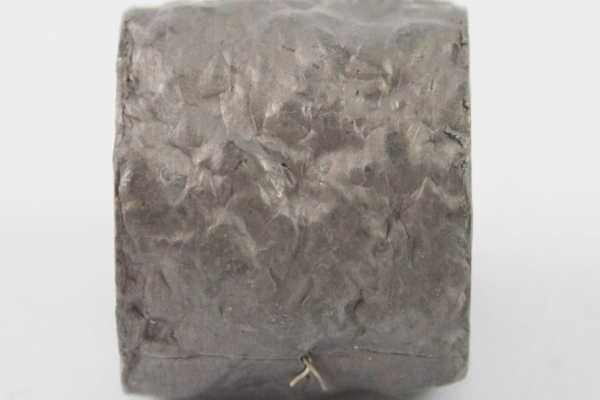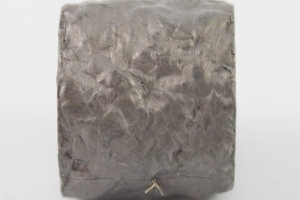
Lead is an elemental metal, extremely heavy, but soft to the touch – you can easily mark it by digging in your fingernail. The surface tarnishes from blue-ish silver to a dull, dusty grey quite quickly after cutting. Over time lead can form an oxide layer on its surface that is white in colour. This white dust (lead oxide) is extremely bad for you.
Lead has a low melting point; in fact it was common in the early 20th century for people to melt lead on the kitchen stove to pour into small soldier-shaped moulds to make toys. This is not a recommended practice however, as lead is poisonous and particularly toxic for children, whose nervous systems are still developing. One of the main hazards was the widespread use of lead as a preservative in domestic paint (lead poisoning was also known as painters colic), and the fact that lead has a reportedly sweet taste, causing some children to chip off bits of paint to chew. Lead has been used for centuries; since before the bronze age, but it was the Romans who used it in large quantities for water pipes. The word plumbing derives from the roman plumbum meaning soft metal. Lead has been a cheap, ‘poor’ metal for years but recently a sharp hike in its value has led to instances of the material being stolen from roofs.
Sample ID: 160
Add materials you find interesting to your own selections.
Use the  button to select a material and get started.
button to select a material and get started.



